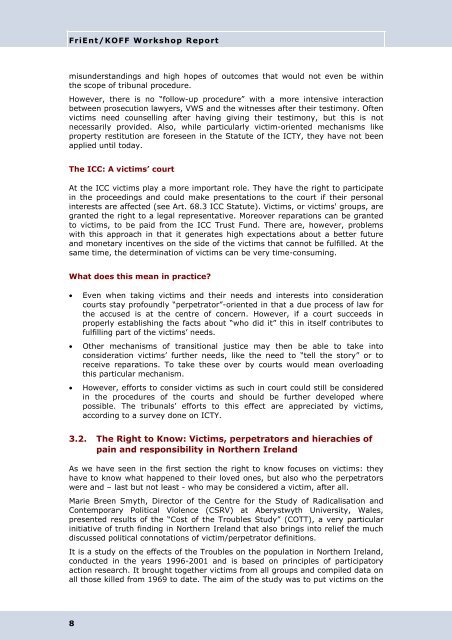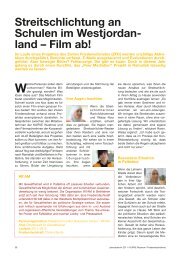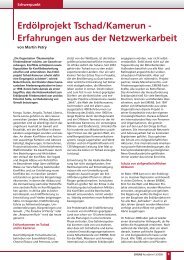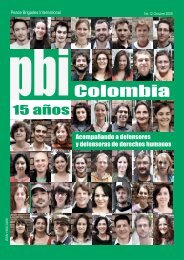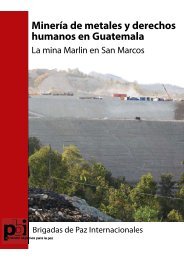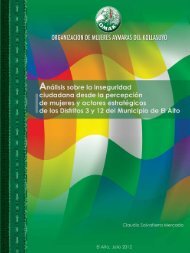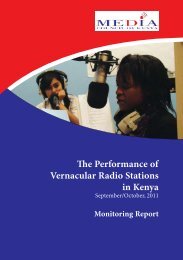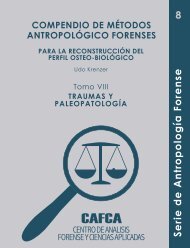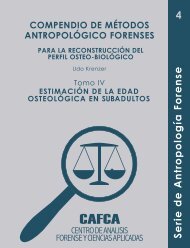Engaging with Victims and Perpetrators in Transitional ... - FriEnt
Engaging with Victims and Perpetrators in Transitional ... - FriEnt
Engaging with Victims and Perpetrators in Transitional ... - FriEnt
- No tags were found...
You also want an ePaper? Increase the reach of your titles
YUMPU automatically turns print PDFs into web optimized ePapers that Google loves.
<strong>FriEnt</strong>/KOFF Workshop Reportmisunderst<strong>and</strong><strong>in</strong>gs <strong>and</strong> high hopes of outcomes that would not even be <strong>with</strong><strong>in</strong>the scope of tribunal procedure.However, there is no “follow-up procedure” <strong>with</strong> a more <strong>in</strong>tensive <strong>in</strong>teractionbetween prosecution lawyers, VWS <strong>and</strong> the witnesses after their testimony. Oftenvictims need counsell<strong>in</strong>g after hav<strong>in</strong>g giv<strong>in</strong>g their testimony, but this is notnecessarily provided. Also, while particularly victim-oriented mechanisms likeproperty restitution are foreseen <strong>in</strong> the Statute of the ICTY, they have not beenapplied until today.The ICC: A victims’ courtAt the ICC victims play a more important role. They have the right to participate<strong>in</strong> the proceed<strong>in</strong>gs <strong>and</strong> could make presentations to the court if their personal<strong>in</strong>terests are affected (see Art. 68.3 ICC Statute). <strong>Victims</strong>, or victims' groups, aregranted the right to a legal representative. Moreover reparations can be grantedto victims, to be paid from the ICC Trust Fund. There are, however, problems<strong>with</strong> this approach <strong>in</strong> that it generates high expectations about a better future<strong>and</strong> monetary <strong>in</strong>centives on the side of the victims that cannot be fulfilled. At thesame time, the determ<strong>in</strong>ation of victims can be very time-consum<strong>in</strong>g.What does this mean <strong>in</strong> practice?• Even when tak<strong>in</strong>g victims <strong>and</strong> their needs <strong>and</strong> <strong>in</strong>terests <strong>in</strong>to considerationcourts stay profoundly “perpetrator”-oriented <strong>in</strong> that a due process of law forthe accused is at the centre of concern. However, if a court succeeds <strong>in</strong>properly establish<strong>in</strong>g the facts about “who did it” this <strong>in</strong> itself contributes tofulfill<strong>in</strong>g part of the victims’ needs.• Other mechanisms of transitional justice may then be able to take <strong>in</strong>toconsideration victims’ further needs, like the need to “tell the story” or toreceive reparations. To take these over by courts would mean overload<strong>in</strong>gthis particular mechanism.• However, efforts to consider victims as such <strong>in</strong> court could still be considered<strong>in</strong> the procedures of the courts <strong>and</strong> should be further developed wherepossible. The tribunals’ efforts to this effect are appreciated by victims,accord<strong>in</strong>g to a survey done on ICTY.3.2. The Right to Know: <strong>Victims</strong>, perpetrators <strong>and</strong> hierachies ofpa<strong>in</strong> <strong>and</strong> responsibility <strong>in</strong> Northern Irel<strong>and</strong>As we have seen <strong>in</strong> the first section the right to know focuses on victims: theyhave to know what happened to their loved ones, but also who the perpetratorswere <strong>and</strong> – last but not least - who may be considered a victim, after all.Marie Breen Smyth, Director of the Centre for the Study of Radicalisation <strong>and</strong>Contemporary Political Violence (CSRV) at Aberystwyth University, Wales,presented results of the “Cost of the Troubles Study” (COTT), a very particular<strong>in</strong>itiative of truth f<strong>in</strong>d<strong>in</strong>g <strong>in</strong> Northern Irel<strong>and</strong> that also br<strong>in</strong>gs <strong>in</strong>to relief the muchdiscussed political connotations of victim/perpetrator def<strong>in</strong>itions.It is a study on the effects of the Troubles on the population <strong>in</strong> Northern Irel<strong>and</strong>,conducted <strong>in</strong> the years 1996-2001 <strong>and</strong> is based on pr<strong>in</strong>ciples of participatoryaction research. It brought together victims from all groups <strong>and</strong> compiled data onall those killed from 1969 to date. The aim of the study was to put victims on the8


